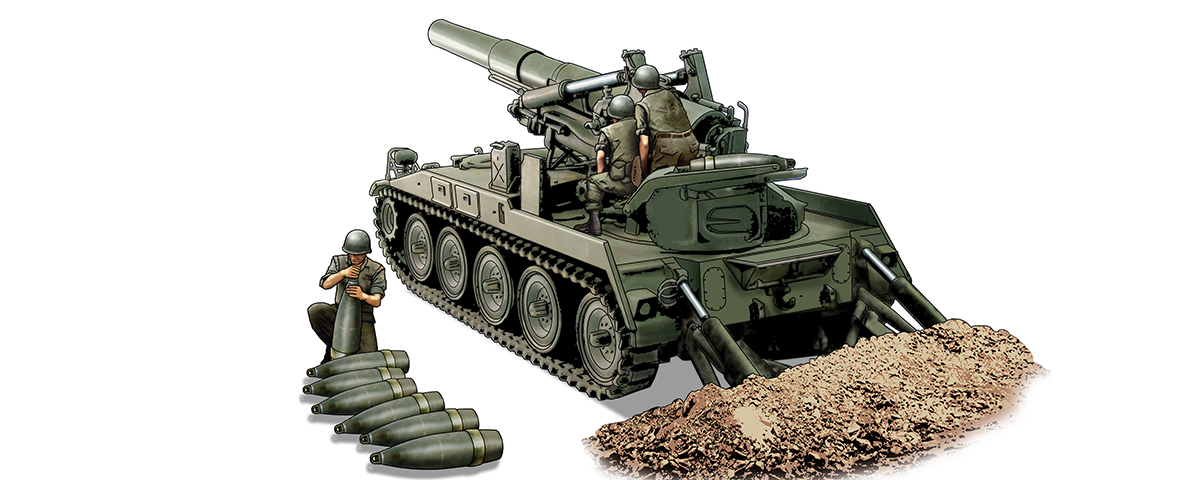The self-propelled M-110 8-inch howitzer was a corps- and division-level weapon that could bust bunkers, destroy enemy infantry in the open and excel at counter-battery fire.
Consisting of an M2A1E1 8-inch howitzer mounted on a tracked chassis, the M-110 had a five-man crew in the main vehicle, which carried only two rounds. The other eight crewmen and basic ammunition load traveled in an accompanying M-548 tracked vehicle.
The M-110 entered service in 1961. Its 8-inch howitzer used separate loading or “bagged” ammunition, firing two types of charges, either the M1 (Green Bag) or M2 (White Bag). The Green Bag consisted of charges 1 to 5 and was used when engaging targets within 10,000 meters. The White Bag, with charges 5 to 7, was used for targets beyond 8,900 meters out to maximum range. The bags provided significantly different muzzle velocities, so the unit’s Fire Direction Center had to be very specific about which bag to load for a “Charge 5” fire mission.
Although it was a nuclear-capable weapon, high-explosive shells and the M404-improved conventional munitions with 104 “bomblets” or submunitions constituted the only 8-inch rounds deployed and fired in Vietnam.
Contrary to some reports, no beehive rounds were developed for the 8-inch, or any other artillery piece larger than the 105mm howitzer; it was not a practical round for cannons that used separate loading ammunition.
The M-110’s accuracy and firepower proved critical to the outcome of several battles, including the defense of Khe Sanh and many fire bases. The only criticism directed against it was the howitzer’s “lack of range,” something solved after Vietnam by extending the barrel, reinforcing the breech and providing improved ammunition. The resulting M-110A2 (with muzzle brake) served through Operation Desert Storm. Although retired from U.S. service shortly after century’s end, it continues to serve with Allied armies around the world.
Originally published in the December 2009 issue of Vietnam magazine.





